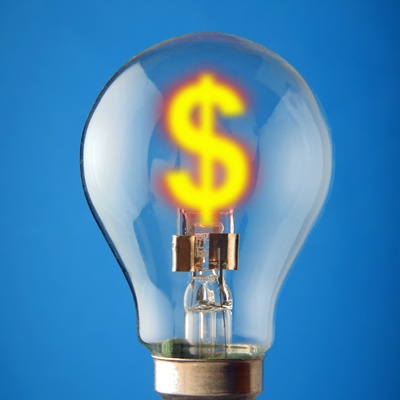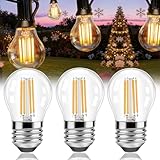A while back, I challenged myself to cut my electricity bill without hurting my lifestyle in any way. Fortunately, I had some experience from living in residences with little or no air conditioning, and very limited heating. In addition, I have been diligent in researching solutions and I have cut my electric use down to $1 of electricity use per day in some months, and occasionally even less, even when running my computer 24/7, my television most of the day, and other appliances like my Aerogarden, which also runs continuously. I've recently gotten bills from my electric company that are so low I thought they had made a mistake!

Easy Ways to Reduce Your Electric Bill
Without a lot of investment, you can reduce your electric usage—in some months, I have my bill down to a dollar a day, including all the surcharges I pay for not using "enough"!
Know Your Weather
Believe it or not, you can use the weather to your advantage in reducing your electricity bill. On those occasional warm winter days, or cool summer nights, you can open your windows to regulate the temperature inside (make sure you turn off your air conditioning or heating first). Allowing your windows to stay open, and making sure that there is cross-ventilation (at least one window open on each side of your dwelling) will draw in air of the desired temperature and reduce your indoor pollutants, as well as freshen your home. Let the temperature get to a few degrees on the far side of your desired temperature, and your home will slowly cool or warm to the perfect degree.
Humidity
Humidity plays an important role in controlling temperature. With humid air, the temperature changes more slowly. Therefore, maintaining proper humidity in your home is a must, especially in winter. The ideal level for your health is 45-55% humidity, and this range is optimal for your wood furniture and floors, pets, plants, musical instruments, and even your electronics.
Adjust Slowly
When the weather begins to change, instead of turning your thermostat to its usual setting, change it by only a few degrees in your desired direction. When you are comfortable, leave it there while you are home. When you are away, change to your "away" setting, but when you come home, again, change by a degree or two each hour until you are comfortable. You may find that you can adjust to a lower setting in winter, or a higher setting in summer, by making changes gradually.
Vary Your Linens with the Season
Flannel sheets in the winter, and cooler sheets in the summer, may help you to sleep better without using more electricity. Use multiple layers of covers and adjust them as necessary to keep yourself comfortable while you sleep. Down or wool comforters, mattress pads, and cooling gel liners are great for keeping your bed warmer or cooler.
Instead of running your central heating at night, consider using a heating pad to warm you until you fall asleep (never use a heating pad while actually sleeping). Then the covers on your bed will retain the heat until your own body heat can make up for the loss. Use cooling packs in summer to keep you cool (you can even wrap one in a dish cloth and slip it inside your pillow).
Natural-fiber sheets will be much more comfortable than those made with artificial fibers, and will also help your heating and cooling bills.
Lighting
While you can replace your incandescent or compact fluorescent light bulbs with LEDs, which are rapidly decreasing in price and increasing in reliability (and there are very good reasons to do so), there are other ways in which you can dramatically reduce your light use, without compromising your lifestyle.
The first is simply to examine your light fixtures and the light they disperse. Are they in the right place to do their job? If your light sources are not in the right place to shed light where needed, in the case of lamps, consider repositioning them. For example, if your table lamps shed a sufficient amount of light for reading, but are too low to cast the right amount of light on your book, consider either raising the lamps, changing the lamp shades, or using a direct reading light or sunlight rather than increasing your bulb wattage.
Open your curtains/blinds during the day, so that you can take advantage of natural sunlight instead of turning on lights.
Another factor to consider is the light color. While most of us are used to the yellow glow of incandescents, and may initially balk at the use of cooler lights, for some tasks a cooler light color may enhance visibility. While it may take a bit of getting used to, if you see better under a cooler light color, perhaps it may be worth your while to try out a different light color instead of increasing your bulb wattage. I gave myself a month of working with cooler light temperatures, and now I can't imagine going back to the warmer color, simply because I see so much better!
Examine your fixtures and decide how much light you really need to accomplish your task. In my bathroom, the fixture takes five light bulbs. Do I really need an operating theater to brush my teeth and comb my hair? Probably not, especially at my age! Instead of 60 watt or even 40 watt bulbs, I went with 15 watt equivalents, which provides me with 75 watts of light, (but because they are LED bulbs, 5 light bulbs use 9 watts). Nobody my age needs to see themselves any better than that. If you're younger, 125 watts equivalent should do.
I also installed a light in the hallway outside my bathroom, for those nights when I just need to get up in the middle of the night. Instead of using 75 watts to light up my bathroom for a few minutes, I use a 25 watt LED equivalent, which uses just 4.5 watts of electricity, to find my way there and back. If you live with other people, consider getting a headlamp to find your way around—you won't wake everyone else up.
I have currently switched over all but two bulbs to LEDs, and I can really see the difference in my electric bill!
 | Coleman CPX 4 LED Headlamp The Coleman CPX 4 LED Headlamp is the smallest, lightest high-power LED headlamp in the world. It boasts 11 continuous hours of runtime at 75 lumens of light, and features a red... |
If you just need to get up for a few minutes, consider keeping a headlamp by the bed. You can easily see your way around without waking up someone who is sleeping, and you'll save on electricity because you won't have to turn on the lights to see.
Home Automation
Who doesn't love the feeling of safety and security of coming back to a well-lit home, or being able to control your lights and appliances without being distracted from what you're doing? Enter home automation, which enables remote control of just about everything electrical in your house.
This technology is well-established, having been around at the consumer level since the 1980s, and the devices are well-tested and reliable. With more devices being produced all the time, it's easy to program your home or business to run more efficiently.
The more modern devices, such as the Wemo, can even be controlled from your smartphone, saving you even more money. (You can automate the process further, so that your lights automatically turn on when you pull into the driveway.)
Fans
Ceiling fans, box fans, personal fans, and all the rest: there's nothing better when you're just a degree or two away from being perfectly cool. Leaving ceiling fans on helps distribute heat evenly throughout the house, and the evaporative effect in summer cools you down even further. Switching your ceiling fans in winter, so they pull cool air away from you, without cooling you down, will also push warm air away from the ceiling and down closer to you.
Box fans are wonderful for cooling off a room. Set next to the floor, they push the cool air from the floor around, and add to the evaporative effect. Even a fan outside, when it's just a degree or two too warm, can make a patio livable again.
A personal fan can keep you cool when you're too warm and everyone else is comfortable.
A Really Simple Trick to Keep Warm or Cool
Believe it or not, this costs almost nothing and will work wonders. Simply fill a dishpan with warm or cold water, and soak your feet in it. Usually, whatever our feet feel, the rest of our bodies feel, too. (After all, don't you nudge a foot out from under the covers at night when you're too hot?) Add some Epsom salts and a little essential oil, or invest in a bubbly foot bath.
Zoning Your House
This has nothing to do with residential building codes, but everything to do with reducing your electric use. If you are spending most of your time in one part of the house, you want to keep that part of your house comfortable, but you can put on a sweater for a one-minute trip to the kitchen, or survive a few minutes in a slightly warmer area of the house to retrieve something.
An expert in HVAC will be able to analyze your needs and adjust the vents in a forced-air system so that your most heavily-used locations will get the right temperature, instead of heating or cooling your entire house. Most importantly, your thermostat will accurately measure when to cut off or turn on.
You Cooked this Where?
I do a lot of outdoor cooking in the summer, and indoor cooking in the winter. When it's hot outside, I take my slow cooker outdoors, plug it in, throw in the ingredients, and move the entire thing inside when dinner is ready. My house doesn't get hot, and the food cooks just the same.
I also use my smoker/grill. A few minutes with a magnesium fire starter, and everything is ready to go: I load up a bunch of food, cook it slow and low, and eat for days.
On cool days, I do a lot of cooking inside. I drag stuff out of the freezer, prepare everything, and cook items that need like temperatures together. When I finish, I leave the oven door open and put a small fan in front of the oven to disperse the heat.
Choose Your Electricity Provider Wisely
As I recently discovered, if you choose your own electricity provider, rates are not the only consideration. Many companies tack on fees, surcharges, "pass-through" rates, and many other charges, including charges for "not using enough" electricity.
However, some companies either do not charge you for these fees, or their charges are built into their rates, so you need to evaluate them very carefully. (A note: when you have a choice of providers, you're still actually using the same electricity from the same company, regardless of which provider you select. The provider you select handles the billing, and little else.)
So, a rate of 7.2 cents per kilowatt-hour may seem like a great deal. But if that quoted rate does not include a 3-cent per kilowatt-hour "pass-through" rate, your rate is actually 10.2 cents per kilowatt-hour, and a provider who charges 9.8 cents per kilowatt-hour, where the pass-through rate is already included in the quote, would save you money. So you need to check all possible providers carefully, and be sure to ask questions about additional fees before selecting one.
Not Sacrifices, but Upgrades!
For just a few hundred dollars, used solely from the savings on electricity, I have been able to upgrade my lifestyle considerably. My electric use continues to decrease each month (in fact, when I have guests my electric bill doubles or triples, which just goes to show how wasteful of electricity most people are). I am now far more comfortable, and have a much better lifestyle than I had before, simply by making smarter choices!
You might also like
Are You Poisoning Your Family?Common household products contain dangerous toxins, and using them too often ...
Invasive Species in BritainBritain has some trouble with plants and animals that have been introduced an...





















 My Experience with KaiZenon 04/19/2016
My Experience with KaiZenon 04/19/2016
 How to Use Your Car Cigarette Lighter: Fun, Ridiculous and Useful Aftermarket 12-volt Accessorieson 10/03/2015
How to Use Your Car Cigarette Lighter: Fun, Ridiculous and Useful Aftermarket 12-volt Accessorieson 10/03/2015
 Why Use NextDoor?on 07/13/2015
Why Use NextDoor?on 07/13/2015
 Food Network Toaster Reviewon 06/12/2015
Food Network Toaster Reviewon 06/12/2015


Comments
First off, congratulations on going solar!
One of the recommended ways to make solar affordable, is, in fact, to reduce one's energy consumption. The less energy you are accustomed to using, the fewer solar panels you will need.
I haven't yet had the opportunity to go solar, since I live in a large apartment complex, but I am so interested in it, I'd love to see articles on here detailing your installation experience, results, etc.
These indicate a well thought out plan. I like the ideas. You did say affordable, so I would not expect solar energy to enter the article. We went solar, but onl because the state made a 50% tax credit, and the U. S. government another 30%. So, it became affordable.